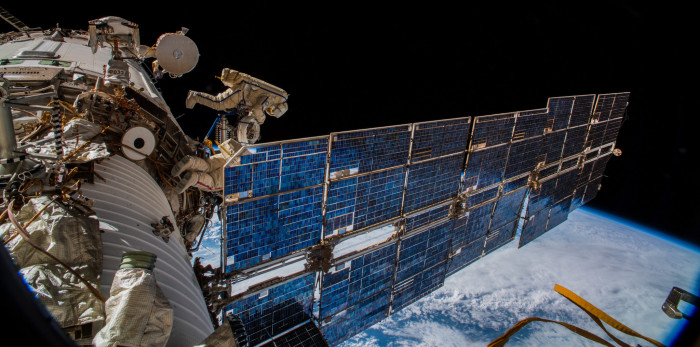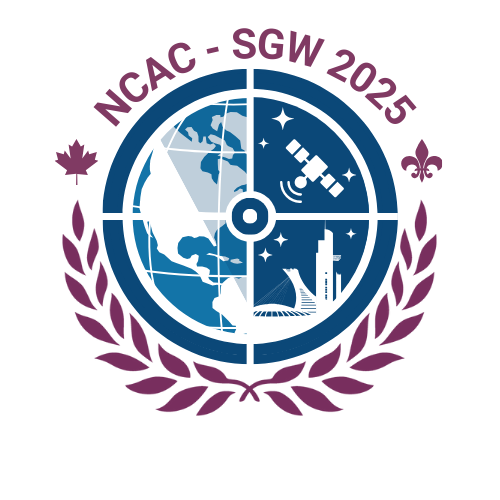How can Space-Based Solar Power support Earth’s Sustainable Development?
by Ghanim Alotaibi
In early 2020, the share of electricity generated by Solar Photovoltaics (PV) and wind reached 9%; however, carbon emissions increased almost linearly since 2005, reaching 413 parts per million in 2019. Stronger measures are needed to reduce carbon emissions – this is clearly identified in UN Sustainable Development Goal (SDG) 13, which emphasizes taking urgent measures to combat climate changes and its impacts. Space-Based Solar Power (SBSP) is a promising renewable technology that could aggressively mitigate climate change.
How does it work?
Space Based Solar Power technologies use satellites to generate power and beam the power down to Earth. There are many different concepts for SBSPs, but most concepts involve photovoltaics solar arrays to generate power. Solar Power Satellites can be located in Low Earth Orbit (LEO) or Geostationary Orbit (GEO). Wireless Power Transmission (WPT) to Earth can involve microwave radiation or laser beams. In the ground, a rectenna (a rectifying antenna) receives the power from space (receives microwave or laser), then power is distributed to the users. Further discussion about the many different concepts of Space Based Solar Power can be found in literature.
Generating power from space and beam it down to Earth might look impractical. But there are many contributing factors that will potentially make SBSP competitive with conventional methods to generate power. The location of SPSs in space is an advantage for its economical feasibility because of multiple reasons. For example, the solar constant in space is about 30% higher than the solar constant on Earth, and microwaves and lasers can’t be impacted by weather patterns (clouds, dust storms, etc..). In some orbital locations, SPSs can beam power all day and night at maximum solar intensity, unlike here on Earth where the solar irradiation intensity is lower in the afternoons and mornings than at noon. However, the most critical factor to realize the economical feasibility of SBSP is the launching cost.
The idea of generating power in-orbit and beaming it to Earth is not new. Studies and reports have validated its feasibility. Although 20th-century studies were not encouraging further investment in SBSP due to the extremely high cost requirement and many technical challenges, the 21st century has witnessed new perspectives and more activities. A recent study by the International Astronautical Academy found out that SPS are technically feasible and that no fundamental technical barriers would prevent the realization of large-scale SPS platforms. Another study funded by NASA’s Innovation Advanced Concepts Program (NIAC) advanced the Technology Readiness Level (TRL) to TRL 3-4.
To realise the full potential of SBSP technologies in the future, the design, assembly, deployment and power distribution should be regulated and organized. There are lessons that can be learned from the solar energy sector on Earth. The good news is that launching cost is expected to be reduced in the future. This will open the horizon for new markets. SBSP is a promising market, which means it is not only an opportunity to radically mitigate climate change, but also, it will be a commercial opportunity. For this reason, we should start thinking about regulations and legal aspects.
Regulation of renewable energy from space
Looking at the history of terrestrial solar photovoltaic (PV) systems applications, we can learn some lessons for the future. Until 1999, the cumulative installed PV capacity around the world was 1 GW (Energy, 2002) . By the end of 2019, the cumulative installed PV capacity reached more than 580 GW (Bellini, 2020) . Notable increase of PV installations happened after the year 2000, but the major research & development and technological breakthrough were achieved already before that year. So what happened in the year 2000? The answer is in regulations.
Germany’s adoption of the Renewable Energy Sources Act (EEG), which was ratified in April 2000, can serve as a case study of successful utilization of space-based solar power that enabled the energy sector to develop in a sustainable manner. The EEG created a unique ecosystem in which investors can find a safe environment to invest their money on qualified installers, while end users are guaranteed to sell their electricity. The EEG can be considered successful because this regulation scheme was adapted in almost every country with large scale PV installations. This can be a great experience to implement for SBSP.
The creation of an international regulatory entity is essential. Since the United Nations Office of Outer Space Affairs is the organization responsible for promoting international cooperation on the peaceful use of outer space, the proposed entity should fall under UNOOSA’s jurisdiction.
SBSP Under UNOOSA
It is important for any regulation to start by identifying clear goals such as the amount of carbon dioxide to be reduced and when should this goal be achieved. GEO is a limited resource and many SBSP concepts are located in geostationary orbit. Carbon emission reduction can be calculated based on the orbital capacity that can be allocated for SPS. The UNOOSA SBSP office will be responsible for registering all these satellites; a centralized international entity that arranges the deployment of SPSs will guarantee the benefits for everyone.
Regulations will ensure that the power received on Earth will be sold and distributed across borders. A ‘SBSP Office’ could oversee the creation of a global ground infrastructure for SBSP distribution for the benefit of everyone. This means that a receiver can be located in one country, while several countries can benefit from the power delivered. The receiver (or rectina) location will be selected by the UNOOSA office based on locations that will optimize the cost.
Additionally, the ‘SBSP Office’ will qualify companies from around the world to build, design and provide services for the successful deployment of SPSs with low cost and high quality. This means that companies interested in SBSP will find the UNOOSA office the main platform for cooperation so that they can be qualified; investors will then seek to invest in these qualified companies, so they could provide capacity-building programs for less-developed countries in the field of SBSP.
Since not all countries can access the geostationary orbit, a centralized ‘SBSP Office’ under the United Nations will arrange launch opportunities to GEO and assure fair access for all nations.
The proposed regulations would: create business opportunities for investors and benefit developing/less-developed countries; Investors will be able to identify qualified companies which will make their investment safer; ground infrastructure will be protected and every Kwh received in the ground will be sold.
All in all, developing countries will be benefiting because they will obtain access to GEO and special capacity-building programs will support its citizens. Most importantly, all countries will benefit from low-cost electricity, as there would be an international, centralized organization to oversee the implementation of SBSP technologies in a way that helps us tackle climate change at global level.
Ghanim Alotaibi




